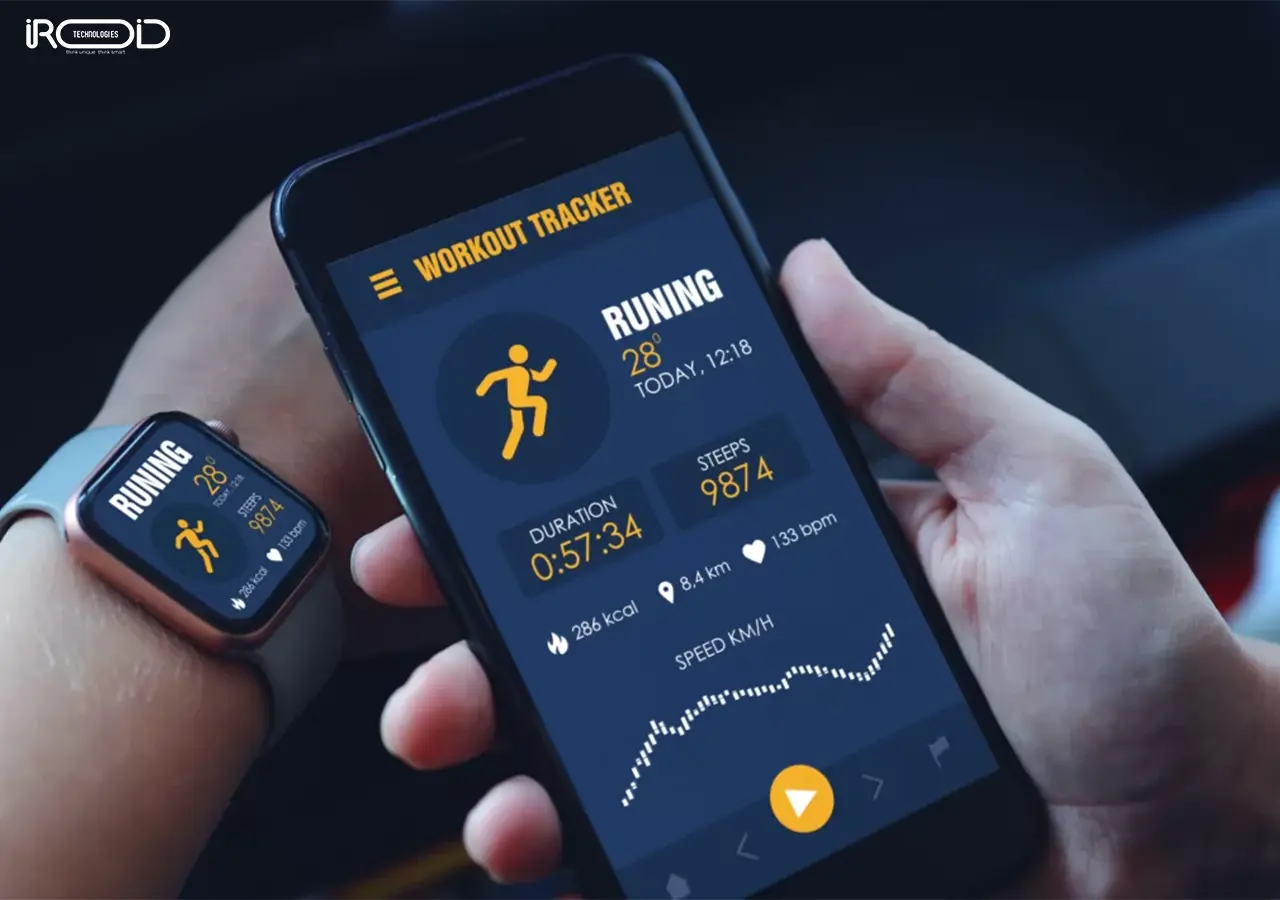From Phones to Wearables: The Shift Redefining Mobile Apps

Mobile app development faces a major transformation in its landscape. The smartphone revolution ushered in a new era that wearable technology drives through its widespread adoption. Several wearable devices unite fitness trackers with smartwatches to become fundamental digital necessities, but augmented reality glasses and smart clothing are set to achieve widespread popularity. Future designs of applications as well as development approaches and user interaction methods must undergo essential modifications as wearables establish an intrinsic connection of technology with everyday life. The "next big thing" in mobile isn't just about iterative improvements to smartphone apps; the distinctive functional parameters of wearables allow us to develop brand-new application domains alongside unique user-facing solutions.
Proficient development partners play an essential role in the rapidly advancing technological world. The app development company in India that is specialised in wearable solutions offers emerging businesses access to specialists who deliver robust cross-platform development along with product design solutions for the wearable market in India. These companies have gained expertise in building applications which connect smartphone and wearable technology while maintaining high performance and pleasure for users across multiple devices. Wearable technology market opportunities require companies to establish partnerships with trustworthy development firms while demanding services grow increasingly fast.
The progress in wearable technology allows us to develop ambient computing models which strengthen our activities while operating autonomously from our continuous supervision. Users face limitations when handling handheld devices and interacting with screens and complex user interfaces, but wearable technology systems provide direct access while addressing these issues. This isn't simply about miniaturising smartphone features; the innovation happens when we harness the particular sensor features along with shape profiles combined with wearable usage circumstances to establish fresh application systems.
Contents
1. The Expanding Universe of Wearable Technology
2. The Reshaping of the App Landscape: Key Transformations
3. Navigating the Challenges, Embracing the Opportunities
4. The Wearable Future of Mobile Interaction
The Expanding Universe of Wearable Technology:
Wearable technology extends beyond smartwatches and fitness trackers to explore new domains in numerous directions. Understanding the nuances of each category is crucial for envisioning the future of the app landscape:
Smartwatches and Fitness Trackers: The Current Leaders: These devices have extended past their elementary function to include basic notification delivery and step counting. The latest wearable devices integrate sensors that monitor heart rate variability and blood oxygen saturation as well as measure sleep stages and detect falling incidents. Future Health-monitoring apps will evolve through smart devices by allowing individual medical data analysis together with automatic wellness strategies and medical data sharing features. Users would benefit from an app monitoring their sleep patterns to customize personalized sleep guidance and tracking gait changes that help identify risky fall situations among elderly users.
Augmented Reality (AR) Glasses: Blending Real and Digital: Augmented reality in wearables and AR glass devices shows promise for mainstream adoption though it remains in its initial stages. The technology displays virtual information on users' actual surroundings enabling them to navigate hands-free alongside receiving contextual details and remote collaboration abilities. Same wearable devices deliver instant turn-by-turn directions to users through their eyes as they reveal historical information and remote technicians provide virtual annotation assistance to site personnel. User interface and interaction design solutions will face challenges to produce effective combinations of physical space and digital elements within the AR glass application framework.
Smart Clothing and Accessories: Integrated Intelligence: The direct integration of sensors and connectivity within accessories and garments stands as one of the most interesting emerging concepts. Smart fabrics integrate sensors which monitor personal health indicators such as heart rate yet they detect motion actions before sending haptic signals for notification functions. Exercise clothing integrates sensors that evaluate your running technique and delivers silent vibration feedback to improve your performance. Smart clothing technology applications join data collection with analysis through uninterrupted user interactions because devices stay connected without separation between these steps.
Hearables (Smart Earbuds): Beyond Audio: The current evolution of earbuds transforms these devices into smart auditory assistants. In addition to their audio function hearables enable real-time language translation and create tailored soundscapes from the user's environment and they serve as biometric data scanners that read heart rate and body temperature through ear canals. The future of earbud apps will enhance listening experiences through audio cues alongside offering contextual notifications in a discreet way. Earbuds which offer the ability to automatically block outside noise when you are in a busy setting and translate a foreign speaking conversation into your ear are examples of the emerging technology.
The Reshaping of the App Landscape: Key Transformations:
We need to transform mobile app integration with wearables along with user experience design because of the various wearable form factors available in the market. Several key transformations are on the horizon:
Context-Awareness and Hyper-Personalization: Wearables surpass smartphones by sensing their surrounding environment more effectively. Wearables track body movements by establishing physical contact and understanding environmental real-time cues to create extensive data about position and physical condition and emotional states. Future development of applications will incorporate contextual information to build personalized proactive user experiences. Smart shopping applications give discounts to users when they are nearby stores that match their preferences, through future productivity applications adjust meeting times based on actual location and travel duration. The AI in wearable technology systems processes data to produce predictive assessments with actionable findings.
Glanceable Information and Micro-Interactions: Efficiency is Key: Smaller screens complement high-speed interactions because wearables require presentable minimal amounts of information plus fast, obtainable commands. Wearable applications should narrow workflow data to core elements, which lets users finish their tasks smoothly while their phones stay in pockets. The combination of financial updates with account balance data appears on banking apps but smart home software lets users adjust their heating settings with their smartwatches through single-touch controls. User experience in wearable apps focuses primarily on providing efficient and intuitive interactions.
Hands-Free and Voice-First Experiences: The Power of Natural Interaction: Software designers must create interfaces which users can navigate through natural instructions and gentle hand signals and tiny eye movements. The creation of advanced voice interfaces and natural language processing technology becomes crucial because of this requirement. Smartwatches enable users to start their run logs before switching to tablets for extensive detailed performance analysis. You can conveniently operate your music player or create short messages through voice commands directed to your smartwatch and AR glasses.
Seamless Integration and Cross-Device Continuity: A Unified Digital Experience: Mobile technology advances will introduce a unified digital interface which creates a smooth transition of data operations between multiple devices. The connected digital ecosystem requires applications to design user interfaces that let people transition between devices while keeping work in progress. You have the option to track performance before entering an immersive tablet analysis period. Wearables must integrate with mobile apps to achieve this unified digital experience.
The Ascendancy of Health, Wellness, and Productivity Apps: Wearable technology has distinctive capabilities to transform applications dedicated to health and wellness tracking combined with personalized fitness coaching and productivity enhancement. Health-monitoring apps will keep evolving thanks to improved wearable sensors that can detect deep health indicators and early warning signs of diseases. Productivity apps use contextual data to assist users with their scheduling and task management while reducing their daily distractions.
Novel User Interface and Interaction Paradigms: Beyond the Touchscreen: New User Interface (UI) and User Experience (UX) design models need to be developed to accommodate the special device characteristics found in wearable devices. Upcoming wearable applications demand developers to find original data display approaches combined with communication systems that unite speech commands to gesture motions and haptic feedback and brain-computer interfaces that will appear during the extended projection. A thorough grasp of modern human-computer interaction in fresh contexts along with a radical departure from smartphone-oriented design will be necessary.
The Convergence of IoT and Wearables: An Interconnected World: The marriage of IoT with wearable technology establishes a previously unreachable connection which brings about automated operations. Wearable devices operate as control and interface points that allow users to manage and communicate with smart devices placed throughout their homes, workplaces and cities. Your smartwatch could become your central control hub to automatically open doors and adjust lights and make transactions seamlessly. The merging of IoT and wearables enables new application categories because they can exploit real-time data sharing and control features.
Navigating the Challenges, Embracing the Opportunities:
The transition to a wearable-integrated future presents both significant hurdles and exciting opportunities for app developers and businesses:
Fragmentation and Platform Diversity: A Complex Ecosystem: The existing wearable market exhibits a high level of fragmentation with varying numbers of operating systems (i.e., watchOS, WearOS, proprietary ones), screen sizes, and resolutions and different sensors capabilities among different manufacturers. This will create complexity that developers will need to navigate through, and at times, develop tailored versions of their applications for different platforms, for best performance and user experience. Frameworks and Tools that make cross platform development and abstraction easier will become increasingly valuable.
Battery Life and Performance Optimization: Efficiency is Paramount: The paradigm is: Efficiency is Paramount: wearable devices have significantly less battery life (and processing power) than smartphones, also lacking the horsepower of desktops and even laptops. Developers will be meticulous on optimizing their applications in order to avoid needless battery drain and to ensure the smoothness and responsiveness of the application. Or in other words, you do need to be sitting about thinking carefully about how resources are consumed, which background processes are allowed to run, and how you synchronize the data.
Data Privacy and Security: Building User Trust: The Challenge of User Trust: Wearables typically gather an immense amount of personal and often sensitive data, especially when talking about health and wellness. Developers should implement strong encryption, secured data storage, transparent data usage policies, among others. Developers must implement strong encryption, secure data storage and transparent data usage policies.
Discoverability and Distribution: Evolving Marketplaces: Marketplaces in Flux: The app discovery and distribution mechanisms for wearables are yet to evolve. In order to make the apps available to users through those new platforms, developers will have to adjust their marketing and distribution strategies in favor of the new app stores based on wearable operating systems and range their apps across devices.
Crafting Truly Useful and Engaging Experiences: Beyond Feature Parity: Beyond Feature Parity: Simply porting smartphone applications to smaller screens or replicating existing functionalities on wearables is not what users would care about. But this then requires wearables developers to be very thoughtful and a little bit creative about how they push the unique capabilities and contexts of use of their device to create novel and valuable and engaging and contextually relevant experience that are actually valuable to users and make them better.
Conclusion: The Wearable Future of Mobile Interaction
The future of wearable tech in mobile apps is bright and brimming with potential. As wearable technology devices become affordable and embedded in everyday activities, digital experiences will standardize across every user. Businesses looking to succeed in this disruptive industry need established partnerships with experts who have experience in the field. Businesses can bring innovative applications to serve the fast-growing market segment by choosing to hire app developers in India, skilled in wearable technology and cross-platform development. The transition from a smartphone-centric era to a more distributed, wearable-integrated future is not just an evolution; Technology evolves through a revolutionary change in user interactions with technological devices. Design work for wearables and exploratory interfaces enables developers to advance the industry. The next big thing in mobile is no longer in our hands; Digital experiences will develop from the union of wearable technology and personal devices through the development of intuitive, integrated interaction systems that can be customized by users.

